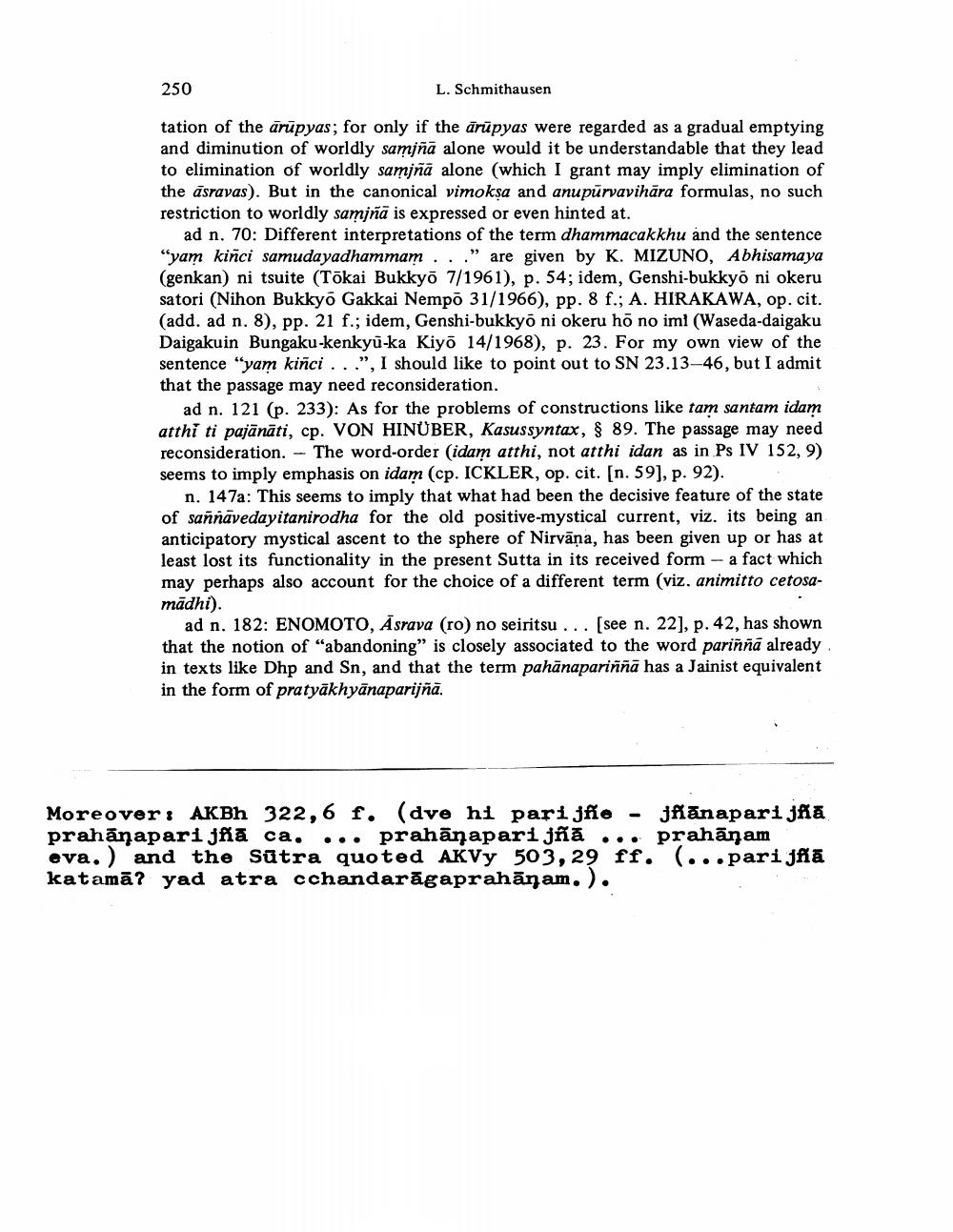________________ 250 L. Schmithausen tation of the arupyas; for only if the arupyas were regarded as a gradual emptying and diminution of worldly samjna alone would it be understandable that they lead to elimination of worldly samjna alone (which I grant may imply elimination of the asravas). But in the canonical vimoksa and anupurvavihara formulas, no such restriction to worldly samjna is expressed or even hinted at. ad n. 70: Different interpretations of the term dhammacakkhu and the sentence "yam kinci samudayadhammam ..." are given by K. MIZUNO, Abhisamaya (genkan) ni tsuite (Tokai Bukkyo 7/1961), p. 54; idem, Genshi-bukkyo ni okeru satori (Nihon Bukkyo Gakkai Nempo 31/1966), pp. 8 f.; A. HIRAKAWA, op. cit. (add. ad n. 8), pp. 21 f.; idem, Genshi-bukkyo ni okeru ho no iml (Waseda-daigaku Daigakuin Bungaku-kenkyu-ka Kiyo 14/1968), p. 23. For my own view of the sentence "yam kinci ...", I should like to point out to SN 23.13-46, but I admit that the passage may need reconsideration. ad n. 121 (p. 233): As for the problems of constructions like tam santam idam atthi ti pajanati, cp. VON HINUBER, Kasussyntax, SS 89. The passage may need reconsideration. - The word-order (idam atthi, not atthi idan as in Ps IV 152, 9) seems to imply emphasis on idam (cp. ICKLER, op. cit. (n. 59), p. 92). n. 147a: This seems to imply that what had been the decisive feature of the state of sannavedayitanirodha for the old positive-mystical current, viz. its being an anticipatory mystical ascent to the sphere of Nirvana, has been given up or has at least lost its functionality in the present Sutta in its received form - a fact which may perhaps also account for the choice of a different term (viz. animitto cetosamadhi). ad n. 182: ENOMOTO, Asrava (ro) no seiritsu ... [see n. 22), p. 42, has shown that the notion of "abandoning" is closely associated to the word parinna already in texts like Dhp and Sn, and that the term pahanaparinna has a Jainist equivalent in the form of pratyakhyanaparijna. Moreover: AKBh 322,6 f. (dve hi pari jne - jnanapari jna. prahanapari jna ca, ... prahanapari jna ... prahanam eva.) and the Sutra quoted AKVy 503,29 ff. (...pari ja katama? yad atra cchandaragaprahanam.).




